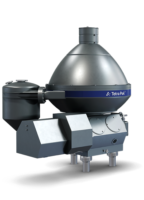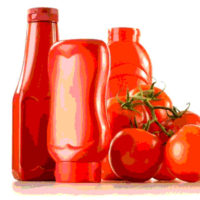Plastic pallets are a growing trend in the food, beverage and pharmaceutical industries. Beverage Pallet Management Netherlands BV (DPB) recently announced that they are transitioning out of wood and into a plastic pallet pool system. DPB is used by all the breweries in the Netherlands and the great majority of soft drink manufacturers. Food companies in the Netherlands are also interested in making the switch. The reasons cited were that “the new pallet will deliver improved environmental performance…it is lighter, stronger and more hygienic than the current wooden pallet.”
Food safety, particularly as it relates to fresh fruits and vegetables, has been a growing concern. According to the U.S. Centers for Disease Control and Prevention, more than 48 million Americans are stricken with foodborne illness every year. For instance, there were Escherichia coli outbreaks in both the U.S. and Europe in 2011 involving fresh produce. In addition, June 2012 saw a Listeria recall involving bagged salads in six states: Georgia, Kentucky, North Carolina, South Carolina, Tennessee and Virginia. Handling in the field has been suspected in these cases, but shipping platforms have come under scrutiny as well. In fact, the U.S. Food and Drug Administration’s Food Safety Modernization Act, enacted in January 2011, is a positive step toward addressing the safety and security of our nation’s food supply, and the law details a number of guidelines—particularly in the areas of product tracking and preventive standards—that companies can follow to avoid contamination via foodborne pathogens.
The well-documented Tylenol and other product recalls by Johnson & Johnson over the past several years have been directly linked to chemical treatments, specifically, the pesticide 2, 4, 6-tribromoanisole (TBA), applied to wood pallets. Wood is often treated with toxic chemicals to repel pests (such as the Asian longhorned beetle, the emerald ash borer and the ambrosia beetle) and fungus that will nest in untreated wood. However, wood pallet treatments are not the only concern relative to food safety. In addition, wood is inherently absorptive, and liquids can easily seep in, leading to the growth of pathogens such as Salmonella, E. coli and Listeria.
The Plastic Alternative
The movement to ensure greater food safety has led to evaluation of all the steps from field to table, including shipping platforms. For decades, wood pallets have been the standard for shipping almost all manufactured products of any type. It has only been within the past few years that a viable alternative, in the form of the plastic pallet, has become available.
Plastic pallets offer a number of advantages. They typically are lighter (< 50 pounds) than their wood counterparts, making them easier to handle and also adding less weight to shipments, thereby saving fuel costs. In addition, plastic pallets are durable—maintaining their 48” × 40” dimensions throughout their life and holding up to 2,800 pounds—exceeding the Grocery Manufacturers Association standards. They also are 100% recyclable and can be ground and used to make new pallets.
Most importantly, plastic pallets are safer and more hygienic for a variety of reasons:
• They are immune to insect contamination; therefore, pests cannot penetrate the plastic and infest fresh fruits and vegetables, meat, poultry and fish
• They do not absorb pathogens or harmful bacteria such as Salmonella, E. coli and Listeria
• They do not require fumigation or heat treatment, which also make wood pallets more susceptible to the presence of mold and other toxins
• They can be easily sanitized by washing before re-use
• They do not have loose or protruding rusty nails or splinters, which can puncture and contaminate packaged foods. Wood pallets typically have 150 nails in each pallet.
• They have embedded radio frequency identification (RFID) tags, which enable organizations to immediately identify contaminated shipments, limit the spread of foodborne illness and facilitate product safety recalls
Track and Trace + Temperature Monitoring = Safe, Secure Product
For any food company, the ability to closely track and trace products throughout the distribution system is a critical aspect of ensuring food safety. A system known as “pallet pooling” can enable food companies to more efficiently and accurately monitor their products at every step in the process. Under a pooled system, manufacturers, distributors and retailers rent, rather than own, their plastic pallets. Pooling works as follows: The manufacturer, distributor or retailer notifies the plastic pallet company of a required shipment. The company then issues clean, ready-for-use plastic pallets to the manufacturing facility, which ships its product down the distributor network. Once the distributor receives the pallets, they either store the product in warehouses or ship the product to the retailer. Once the product has been unloaded at the retail outlet, the distributor returns the pallets to the pallet company. The company inspects the pallets and issues them for reuse.
RFID technology is an integral component of a pallet pooling system, and it has made tracking product shipments much more effective and reliable. Plastic pallets carry a unique serial number that can be read in various ways. To maximize efficiency, these electronically tagged pallets are integrated into the company’s warehouse management system.
The product “license plate” can then be tied with the pallet’s unique identification number, creating a unitized load. This establishes a framework for tracking and tracing loads throughout the supply chain in real time. For instance, if a food company orders 500 pallets, the plastic pallet manufacturer then has 500 individual serial numbers recorded as having been sent to that company. When the food company places its product on a particular pallet, they scan that pallet and transmit data back to the pallet manufacturer, saying that particular pallet is en route to a food retailer. This RFID tracking technology enables companies to reduce lost loads, theft and enables swift and accurate recalls when necessary. As a result, there can be complete accountability throughout the chain.
For perishable items, tracking inventory and managing handling throughout the cold chain is critical. There is now temperature monitoring technology available that can be integrated with a track and trace system—providing temperature monitoring of perishables in-transit, with on-demand information for real-time decision making. For instance, consider a shipment of lettuce from California to New York. Through this technology, produce retailers could check the product’s temperature every 15 minutes during the shipment, and determine if they need to cut any time off the shelf life of the lettuce once it is in the store. This breakthrough enables grocery store and other food retailers to practice more accurate—and ultimately safer—inventory management to optimize the shelf life of perishables.
As food companies have adopted measures to better prevent contamination of their inventories, they have begun to reassess how food and beverages are transported to their stores. Given the safety and cleanliness of plastic pallets, along with the ability to track and trace deliveries throughout the distribution system, it is easy to understand why more food companies have adopted plastic pallets as their mode of choice for shipping.
Rex Lowe is president of iGPS. A relentless innovator in the field of shipping and logistics, he has made a profound impact on how goods and services move in the modern economy through technological innovation and operational breakthroughs in the field. For more information, contact Mr. Lowe at rlowe@igps.net.
Get our eMagazine delivered directly to your inbox
Stay in the know on the latest science-based solutions for food safety.
SUBSCRIBE TODAY!Copyright ©2024. All Rights Reserved BNP Media.
Design, CMS, Hosting & Web Development :: ePublishing



